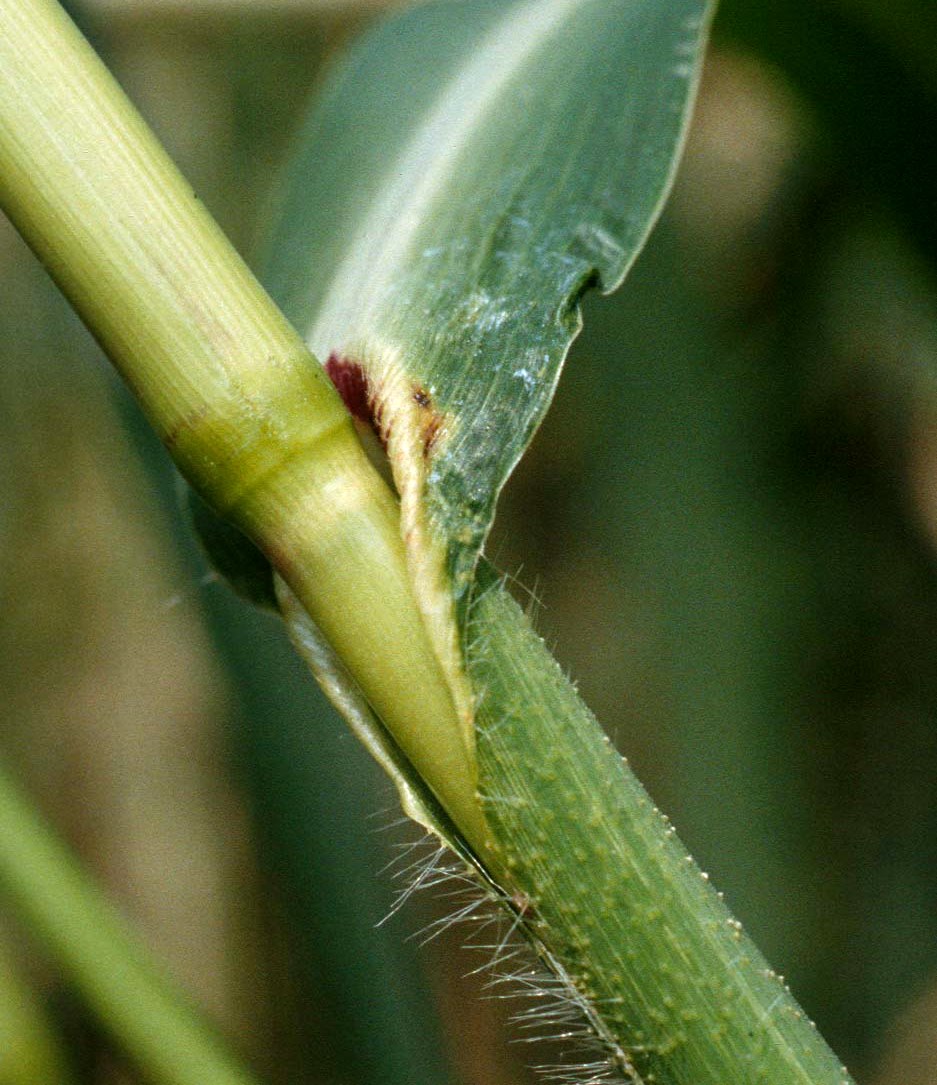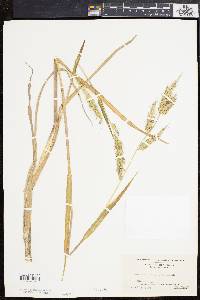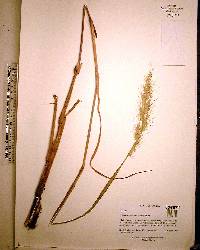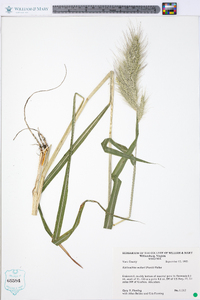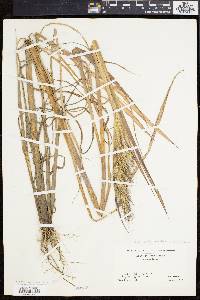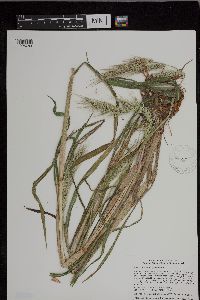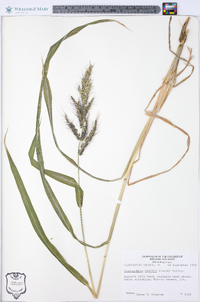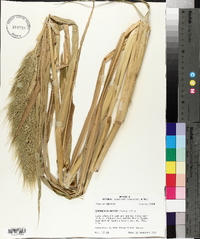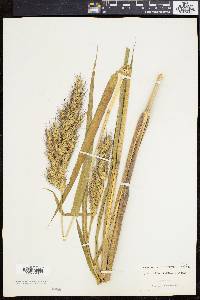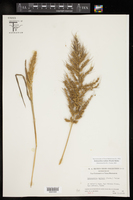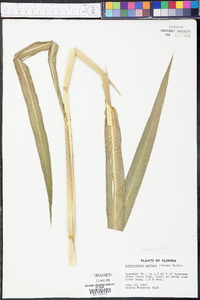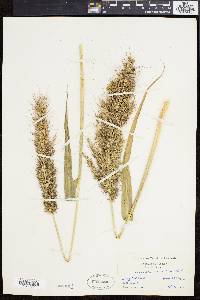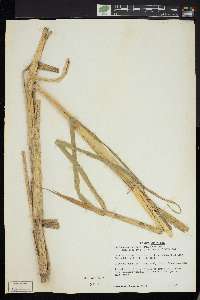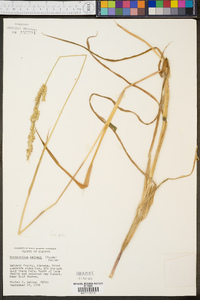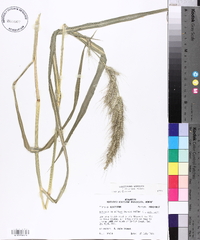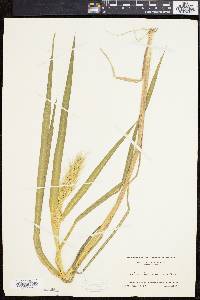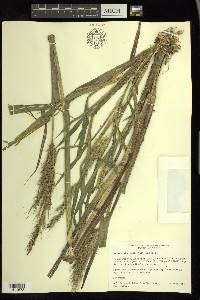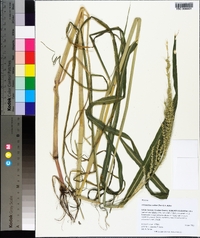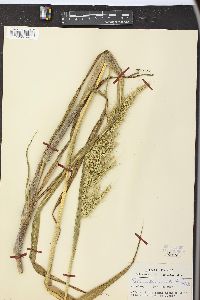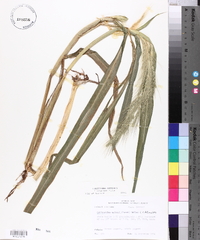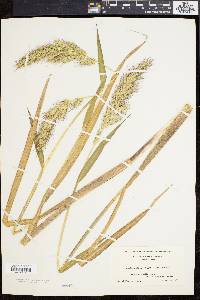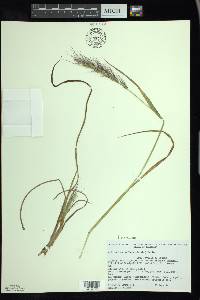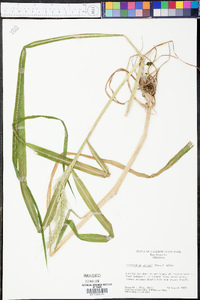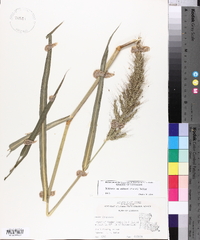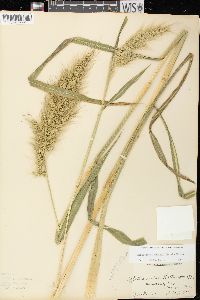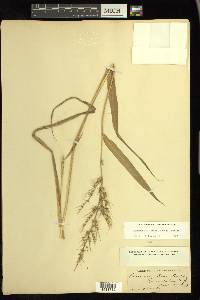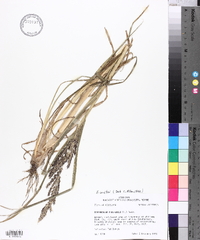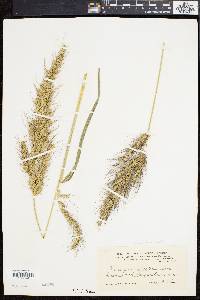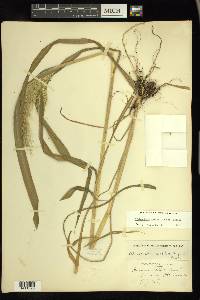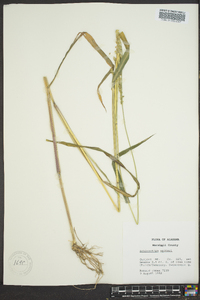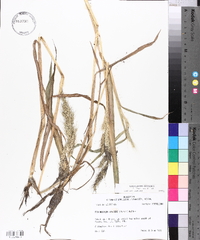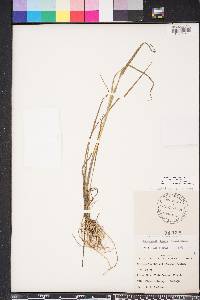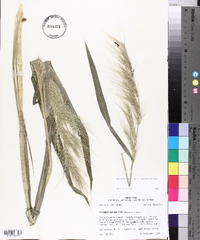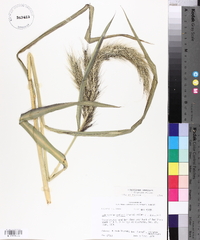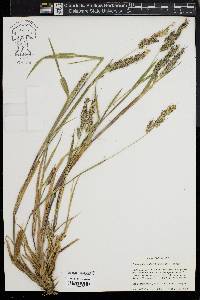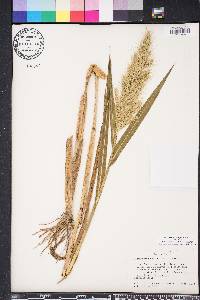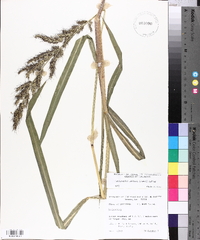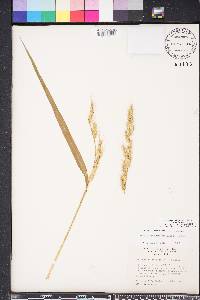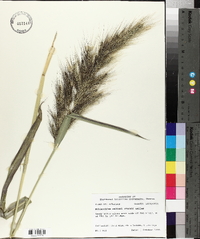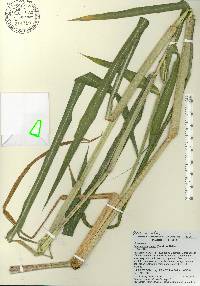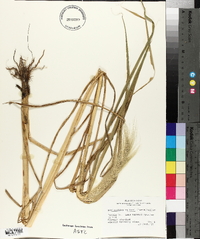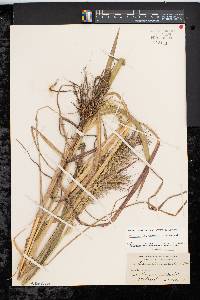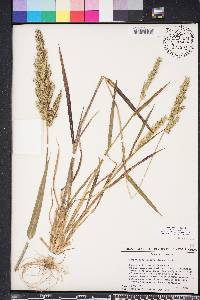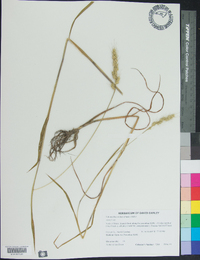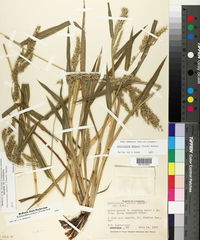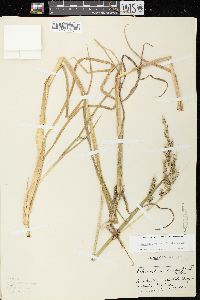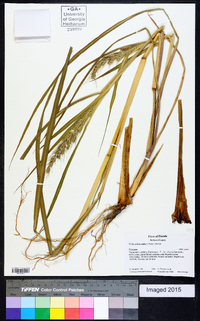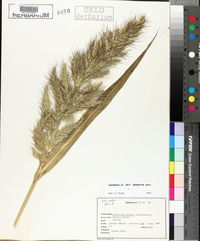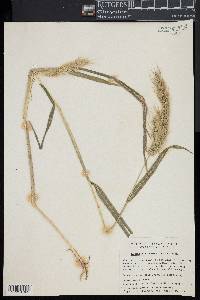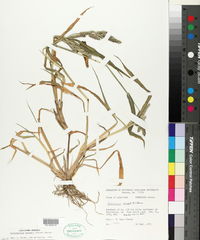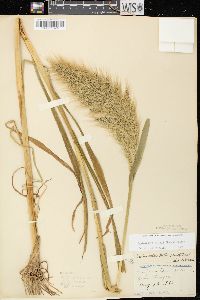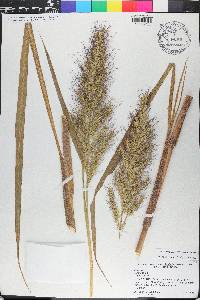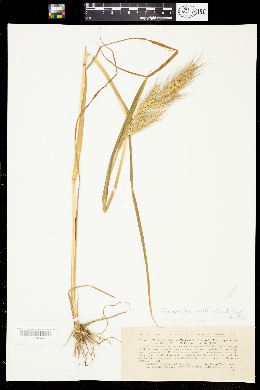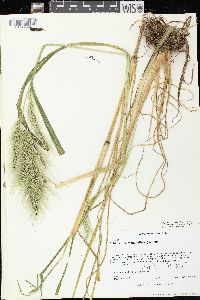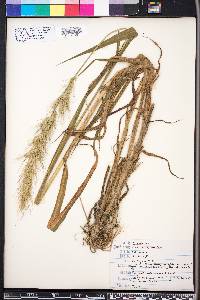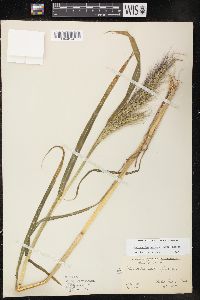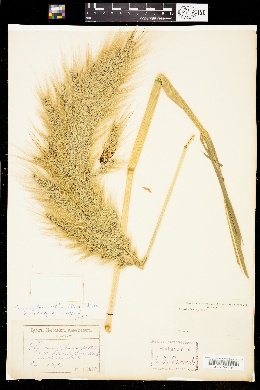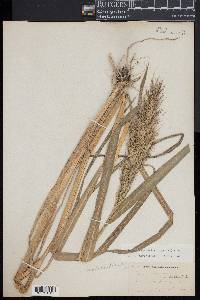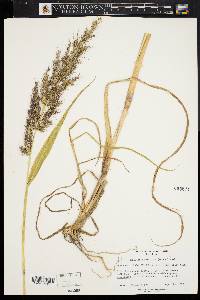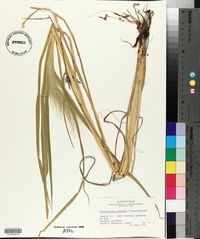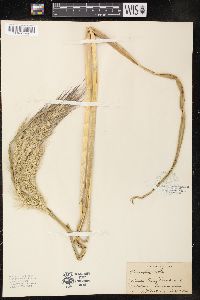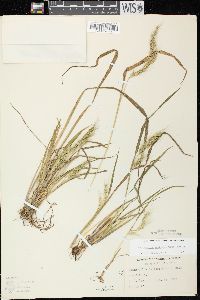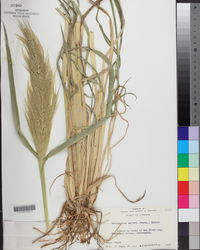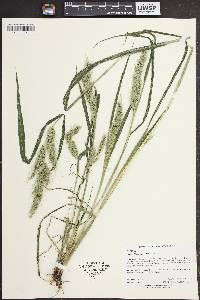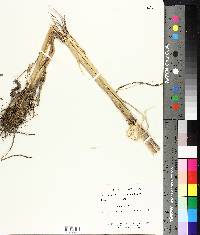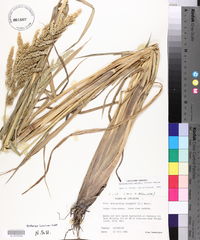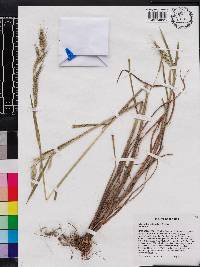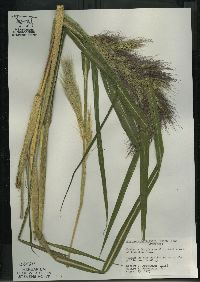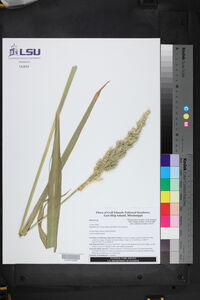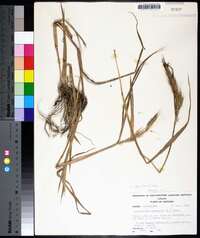Echinochloa walteri
|
|
|
|
Family: Poaceae
Long-Awn Cock's-Spur Grass, more...Coast Barnyard Grass, coast cockspur grass
[Echinochloa crus-galli var. hispida Farw., moreEchinochloa longearistata , Echinochloa walteri f. breviseta Fernald & Griscom, Echinochloa walteri f. laevigata Wiegand, Echinochloa walteri f. walteri (Pursh) A. Heller, Oplismenus crus-galli var. hispidus Alph. Wood, Oplismenus hispidus Alph. Wood, Oplismenus longisetus Kunth, Orthopogon hispidus Spreng., Panicum crus-galli var. hispidum (Muhl.) Döll, Panicum crus-galli var. walteri (Pursh) Farw.] |
Plants annual. Culms (30)50-200+ cm tall, to 2.5 cm thick; nodes pilose or villous, upper nodes usually with sparser and shorter pubescence, occasionally glabrous. Lower sheaths usually hispid, hairs papillose-based, sometimes just papillose; upper sheaths hispid or glabrous; ligules absent; blades to 55 cm long, 10-35(60) mm wide, scabrous. Panicles 8.5-35 cm, erect to slightly drooping, nodes hispid, hairs 3.5-5 mm, papillose-based, sometimes sparsely so, internodes usually glabrous, sometimes hispid, hairs papillose-based; primary branches 1-10 cm, loosely erect, not concealed by the spikelets, nodes usually hispid, hairs papillose-based, sometimes glabrous, internodes scabrous, sometimes also sparsely hispid, hairs papillose-based; secondary branches present on the longer primary branches. Spikelets 3-5 mm, disarticulating at maturity, scabrous to variously muricate and hairy, hairs usually not papillose-based, margins sometimes with a few papillose-based hairs. Lower glumes usually more than 1/2 as long as the spikelets, abruptly narrowing to a fine, 0.5 mm point; lower florets sterile; lower lemmas usually awned, awns 8-25(60) mm; lower paleas subequal to the lower lemmas; upper lemmas 3-5 mm long, about 1.5 mm wide, not or scarcely exceeding the upper glumes, narrowly ovate to elliptical, coriaceous portion subacute, tips acuminate, membranous, without a line of hairs at the base of the tip; anthers 0.6-1(1.2) mm. Caryopses 1.2-1.8 mm, brownish; embryos 52-77% as long as the caryopses. 2n = 36. Echinochloa walteri grows in wet places, often in shallow water and brackish marshes. It is a native species, found in both disturbed and undisturbed sites although not in rice fields. Occasional specimens of E. walteri with glabrous lower sheaths and short awns can be distinguished from E. crus-pavonis by their less dense panicles. Annual herb 30 cm - 2 m tall Leaves: alternate, two-ranked. Sheaths open, compressed, bumpy-hairy on the lower sheaths and sometimes hairy on the upper sheaths. Ligules absent. Blades to 55 cm long, 1 - 6 cm wide, usually over ten times longer than wide, linear to lance-shaped, flat, rough, parallel-veined, with a prominent midrib. Inflorescence: a terminal arrangement of spikelets (panicle), upright or slightly nodding, 8.5 - 35 cm long, hairy (hairs 3.5 - 5 mm long and bumpy-based), with an elongate axis. Primary branches loosely upright, 1 - 10 cm long, with secondary branches. Fruit: a caryopsis, indehiscent, enclosed within the persistent lemma and palea, brownish, 1 - 2 mm long. Culm: 30 cm - 2 m long, to 2.5 cm wide, round in cross-section. Nodes usually hairy. Spikelets: densely crowded on angular branches, 3 - 5 mm long, flat on one side and convex on the other (plano-convex), rough to hairy. Florets: two per spikelet. Lower florets sterile. Upper florets bisexual, compressed dorsally. Anthers three, 0.5 - 1 mm long. Stigmas red. Glumes:: Lower glumes over half as long as spikelets, narrowing to a 0.5 mm long point, membranous. Upper glumes membranous. Lemmas:: Lower lemmas similar to upper glumes in texture and size, usually bristle-tipped (bristle 0.5 - 6 cm long). Upper lemmas 3 - 5 mm long, about 1.5 mm wide, scarcely (if at all) exceeding upper glumes, narrowly egg-shaped to elliptic with a pointed and membranous tip, rounded dorsally, partially leather-like. Paleas:: Lower paleas nearly equal to the lower lemmas. Similar species: No information at this time. Flowering: August to October Habitat and ecology: Local in moist ground, often along lake shores. Occurence in the Chicago region: native Etymology: Echinochloa comes from the Greek words echinos, meaning hedgehog, and chloa, meaning grass, referring to the bristly spikelets of some species. Walteri is named after Thomas Walter (-1740-1789), a South Carolina botanist. Author: The Morton Arboretum Tall and usually erect, mostly 1-2 m; lower sheaths beset with coarse, papillose-based hairs, rarely glabrous; blades up to 25 mm wide; infl dense, often nodding, 1-3.5 dm, the spikelets almost concealed in a mass of awns 1-3 cm on the sterile lemmas; second glume with an awn 2-10 mm; fertile lemma elliptic, nearly or fully 3 times as long as wide, with a minute, withering tip, but this not set off by a line of hairs as in no. 4 [Echinochloa crusgalli (L.) P. Beauv.]; 2n=36. Marshes and wet soil, especially along the coast; Mass. to Fla. and Tex., and irregularly inland to Mich., Wis., Io. and Mo. Gleason, Henry A. & Cronquist, Arthur J. 1991. Manual of vascular plants of northeastern United States and adjacent Canada. lxxv + 910 pp. ©The New York Botanical Garden. All rights reserved. Used by permission. From Flora of Indiana (1940) by Charles C. Deam Infrequent to local in the lake area, with one specimen from the muddy flat of a bayou in Posey County. In the lake area it is found in wet places about lakes, often in shallow water, and at the water edge in rivers. [Forma laevigata has] glabrous sheaths. I have collected it from Posey and Starke Counties. ...... Indiana Coefficient of Conservatism: C = 5 Wetland Indicator Status: OBL |
|
|
|

